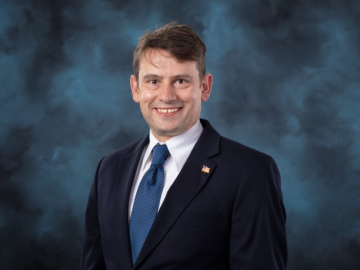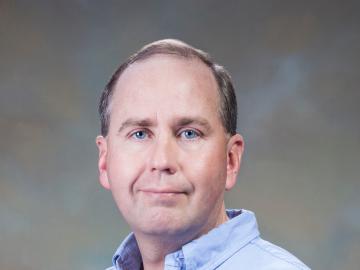
Filter News
Area of Research
- (-) Materials (75)
- (-) Neutron Science (24)
- (-) Supercomputing (141)
- Advanced Manufacturing (3)
- Biology and Environment (44)
- Building Technologies (1)
- Computational Biology (1)
- Computational Engineering (3)
- Computer Science (15)
- Electricity and Smart Grid (3)
- Energy Science (88)
- Functional Materials for Energy (1)
- Fusion and Fission (27)
- Fusion Energy (15)
- Isotopes (1)
- Materials for Computing (16)
- Mathematics (1)
- National Security (46)
- Nuclear Science and Technology (11)
- Quantum information Science (9)
- Sensors and Controls (2)
News Topics
- (-) Computer Science (101)
- (-) Cybersecurity (9)
- (-) Frontier (33)
- (-) Fusion (9)
- (-) Grid (9)
- (-) Machine Learning (17)
- (-) Microscopy (29)
- (-) Polymers (19)
- (-) Quantum Science (36)
- (-) Security (7)
- 3-D Printing/Advanced Manufacturing (30)
- Advanced Reactors (6)
- Artificial Intelligence (41)
- Big Data (23)
- Bioenergy (22)
- Biology (19)
- Biomedical (33)
- Biotechnology (2)
- Buildings (8)
- Chemical Sciences (34)
- Clean Water (4)
- Composites (9)
- Coronavirus (22)
- Critical Materials (15)
- Energy Storage (41)
- Environment (40)
- Exascale Computing (26)
- Fossil Energy (1)
- High-Performance Computing (46)
- Hydropower (1)
- Irradiation (1)
- Isotopes (14)
- ITER (1)
- Materials (86)
- Materials Science (90)
- Mathematics (2)
- Molten Salt (3)
- Nanotechnology (46)
- National Security (8)
- Neutron Science (129)
- Nuclear Energy (22)
- Partnerships (11)
- Physics (36)
- Quantum Computing (21)
- Simulation (16)
- Software (1)
- Space Exploration (7)
- Summit (43)
- Transportation (23)
Media Contacts

Andrew Lupini, a scientist and inventor at ORNL, has been elected Fellow of the Microscopy Society of America.

A study led by Oak Ridge National Laboratory researchers identifies a new potential application in quantum computing that could be part of the next computational revolution.

Researchers at ORNL have developed a machine-learning inspired software package that provides end-to-end image analysis of electron and scanning probe microscopy images.

ORNL has named Michael Parks director of the Computer Science and Mathematics Division within ORNL’s Computing and Computational Sciences Directorate. His hiring became effective March 13.

Chemist Jeff Foster is looking for ways to control sequencing in polymers that could result in designer molecules to benefit a variety of industries, including medicine and energy.

Scientists at ORNL developed a competitive, eco-friendly alternative made without harmful blowing agents.

Environmental scientists at ORNL have recently expanded collaborations with minority-serving institutions and historically Black colleges and universities across the nation to broaden the experiences and skills of student scientists while bringing fresh insights to the national lab’s missions.

A study by Oak Ridge National Laboratory researchers has demonstrated how satellites could enable more efficient, secure quantum networks.

Critical Materials Institute researchers at Oak Ridge National Laboratory and Arizona State University studied the mineral monazite, an important source of rare-earth elements, to enhance methods of recovering critical materials for energy, defense and manufacturing applications.

Paul Langan will join ORNL in the spring as associate laboratory director for the Biological and Environmental Systems Science Directorate.


